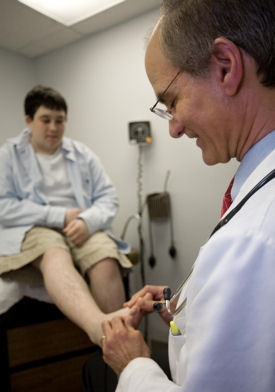When and how to use new phone and Internet E/M coding
There are three new codes for providing E/M over the telephone and one new code for E/M services provided via Internet resources.
In January 2008, this column detailed four new codes that described non-face-to-face services for evaluation and management (E/M). There are three new codes for providing E/M over the telephone (99441-99443) and one new code for E/M services provided via Internet resources (99444). The CMS has announced that it will not pay physicians for providing these services because they are not covered under the Medicare program.
Q: Can I charge patients for these phone calls or e-mails?
A: Yes. Because these codes are considered to be non-covered by Medicare, physicians may charge patients for these services and those patients would be expected to pay cash. It is important to carefully read these codes and review the January 2008 article before deciding to do this, because most phone calls between physicians and patients are not described by these codes.
These codes only describe phone calls and e-mails that serve as a replacement for face-to-face E/M service, not those that immediately precede or follow a face-to-face visit. This means that not only will Medicare not pay for those services, but physicians are prohibited from charging patients for them. If a patient calls and is instructed to come to the office within 24 hours or make the next available appointment, this code may not be used. In addition, if the non-face-to-face service is provided in the seven days following a face-to-face E/M, it may not be reported.
Q: Do Medicare patients have to complete any forms for me to charge them for this service?
A: A form is not required to charge for this particular service. Medicare does require patients to sign a form called an Advanced Beneficiary Notice (ABN) when a service is provided to them that the physician believes will not be covered in the particular situation, but which is sometimes covered in other situations.
An example of a time when a physician should have a patient sign an ABN would be if a screening colonoscopy were provided to a patient who had received one covered by Medicare seven years earlier. The ABN is available from CMS.
For services that are never covered by Medicare, such as the phone calls and e-mails described above, patients are not required to sign an ABN form, or any form, because it is essentially a private transaction between a physician and a patient that has nothing to do with Medicare.
However, because it may be confusing at times to beneficiaries, CMS created a form called the Notice of Exclusion from Medicare benefits. This document serves as a record of the patient acknowledging that he or she recognizes that the service is not covered. This form is online.
Even if this particular form is not used, a physician should ensure that a patient understands that he or she will be paying out-of-pocket for a service before charging for it.
Q: Do I have to document a complete review of systems in order to report a preventive medicine E/M code?
A: Yes. Unlike the problem-based E/M services, preventive visits (99381-99387 and 99391-99397) do not have extensive documentation requirements that specify certain history elements, or what should be included in the physical. Instead, a physician is required to complete a comprehensive service based on the age of the patient. However, a complete review of systems is considered to be a core element of a preventive visit regardless of the age of the patient.
The review of systems is a documentation element that a patient may complete for himself or herself through the use of a form. The form could be as simple as a list of systems with yes/no checkboxes and an instruction to include details if any problems are occurring.
If such a form is used, it is important for it to be included in the chart documentation and for the physician to make some note about reviewing the information. The physician is not required to redocument the information, but if the form is stored elsewhere in the documentation, that day's progress note should point back to that form so that an auditor or another physician could follow it.
Preventive visits are not covered by Medicare, but many private payers do pay for these services.
Q: Can I charge a Medicare patient for a prostate cancer screening digital rectal exam on the same date as an E/M visit?
A: No. Although Medicare has created an HCPCS code for a prostate cancer screening digital rectal exam (G0102), it does not allow for a physician to bill this service on the same date as an E/M. This means that if a physician wishes to charge a patient for this service, the patient would have to come in on a different day and only for the screening digital rectal exam. If this is done, the physician will be paid by Medicare. The national payment for this service is $19.81. All Medicare payments vary based on geography.




